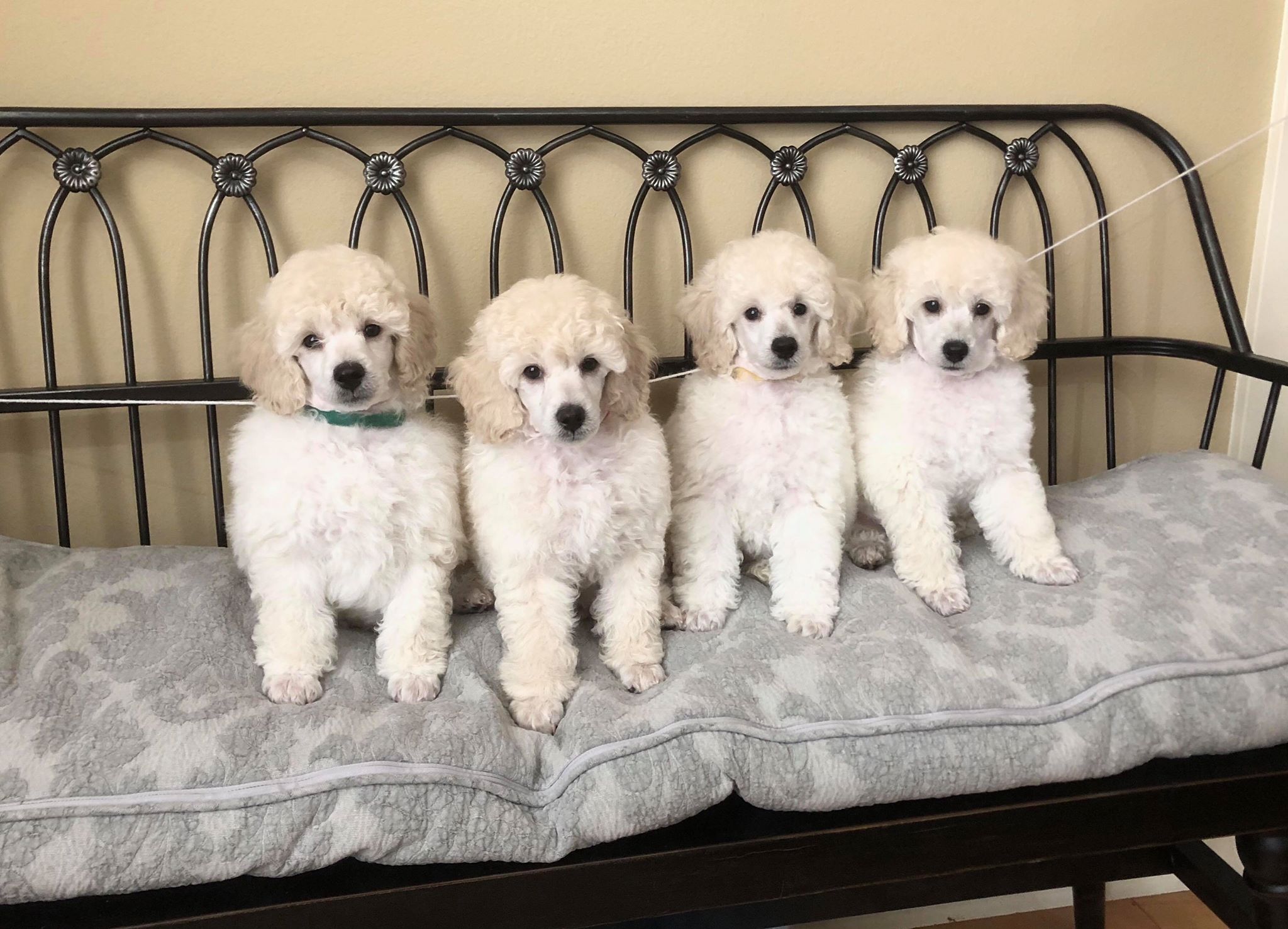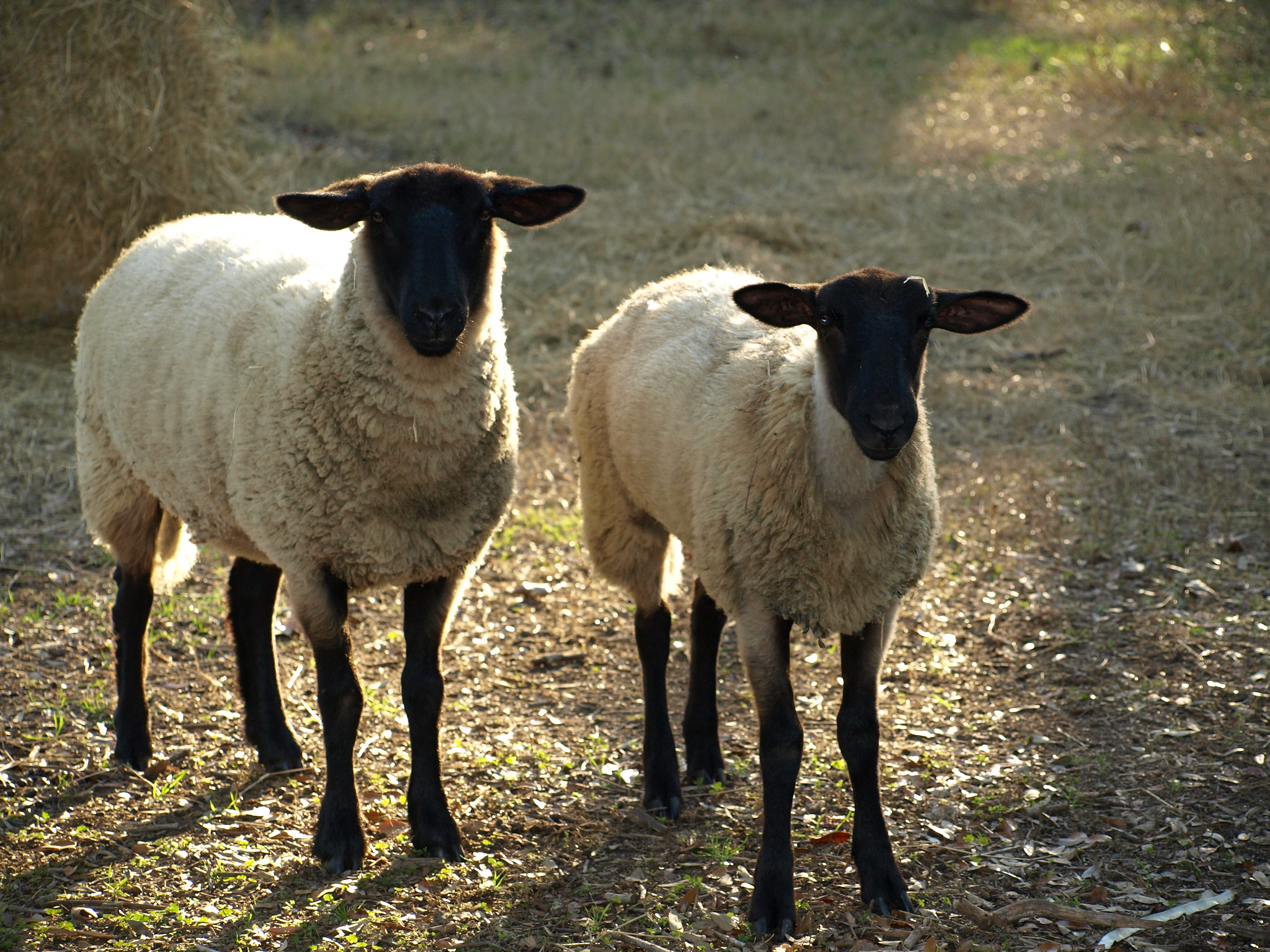|
Rya Sheep
Rya, also known as Ryafår or Swedish Carpet Wool Sheep, is a breed of sheep that is native to Sweden. The breed originated from the Swedish and Norwegian landrace breeds. This double-coated breed of Swedish Landrace origin also contains some Norwegian Spælsau heritage. The purpose of the sheep was to use the long, wavy, and shiny wool to produce rya-wool, which is often used to make carpets. In the early twentieth century, few long wool sheep remained in the province of Dalarna, leading to the restoration of the rya sheep breed. In 2000, there was a stable population of about two thousand rya sheep. They can be found in northern and central Sweden. Most of herds are located in Dalarna. They are usually kept in small flocks. At the start of the 20th century, Dalarna had a population of sheep with long wool, which was popular in the area for decorating national costumes. In 1915, breeding was done to obtain sheep that produced this "rya-wool". The rya sheep is a medium-sized she ... [...More Info...] [...Related Items...] OR: [Wikipedia] [Google] [Baidu] |
Wool Classing
Wool classing is the production of uniform, predictable, low-risk lines of wool, carried out by examining the characteristics of the wool in its raw state and classing (grading) it accordingly. Wool classing is done by a wool classer. Basis for classification Some of the qualities a wool classer examines when classing wool are:Wool Classification Manual by the National Wool Growers Association, of Southafrica * '' Breed of the sheep'': Shedding breeds will increase the risk of medullated or pigmented fibers. Any sheep likely to have dark fibers should be shorn last to avoid contamination. The age of the sheep will have a bearing on the diameter and value of the fibers of wool, too. * ''Usage of chemicals'': Ensure that all rule ... [...More Info...] [...Related Items...] OR: [Wikipedia] [Google] [Baidu] |
Rya (rug)
A rya or rye is a traditional Scandinavian wool carpet, rug with a long Pile (textile), pile of about 1 to 3 inches. They are made using a form of the Ghiordes knot to make the double-sided pile fabric. Though rya means "rug" in English language, English, the original meaning in Sweden of rya was a bed cover with a knotted pile. The first ryas originated in the early fifteenth century as coarse, long-piled, heavy covers used by Sailor, mariners instead of furs. As time progressed, the rugs have evolved to be lighter and more colorful. The Thermal insulation, insulation that ryas provide protects against the cold Scandinavian climate. Ryas are a knotted pile carpet, with each knot composed of three strands of wool, which enables the rug to exhibit rich texture from all the different shades of color. The name originates from a village in southwest Sweden. The term ''rya'' may also refer to a breed of sheep whose wool is used to make rya carpets (see Rya (sheep)). History In the ... [...More Info...] [...Related Items...] OR: [Wikipedia] [Google] [Baidu] |
Sheep Husbandry
Sheep farming or sheep husbandry is the raising and breeding of domestic sheep. It is a branch of animal husbandry. Sheep are raised principally for their meat (lamb and mutton), milk (sheep's milk), and fiber (wool). They also yield sheepskin and parchment. Sheep can be raised in a range of temperate climates, including arid zones near the equator and other torrid zones. Farmers build fences, housing, shearing sheds, and other facilities on their property, such as for water, feed, transport, and pest control. Most farms are managed so sheep can graze pastures, sometimes under the control of a shepherd or sheep dog. Farmers can select from various breeds suitable for their region and market conditions. When the farmer sees that a ewe (female adult) is showing signs of heat or estrus, they can organise for mating with males. Newborn lambs are typically subjected to lamb marking, which involves tail docking, mulesing, earmarking, and males may be castrated. Sheep production w ... [...More Info...] [...Related Items...] OR: [Wikipedia] [Google] [Baidu] |
Litter (animal)
A litter is the live birth of multiple offspring at one time in animals from the same mother and usually from one set of parents, particularly from three to eight offspring. The word is most often used for the offspring of mammals, but can be used for any animal that gives birth to multiple young. In comparison, a group of eggs and the offspring that hatch from them are frequently called a clutch, while young birds are often called a brood. Animals from the same litter are referred to as litter-mates. Litter A species' average litter size is generally equal to one half of the number of teats and the maximum litter size generally matches the number of teats. Not all species abide by this rule, however. The naked mole rat, for example, averages roughly eleven young per birth and has eleven teats. Animals frequently display grouping behavior in herds, swarms, flocks, or colonies, and these multiple births derive similar advantages. A litter offers some protection from predation, not ... [...More Info...] [...Related Items...] OR: [Wikipedia] [Google] [Baidu] |
Fertility
Fertility is the capability to produce offspring through reproduction following the onset of sexual maturity. The fertility rate is the average number of children born by a female during her lifetime and is quantified demographically. Fertility is addressed when there is a difficulty or an inability to reproduce naturally, which is referred to as infertility. Infertility is widespread, with fertility specialists available all over the world to assist mothers and couples who experience difficulties having a baby. Human fertility depends on factors of nutrition, sexual behaviour, consanguinity, culture, instinct, endocrinology, timing, economics, personality, way of life, and emotions. Fertility differs from fecundity, which is defined as the ''potential'' for reproduction (influenced by gamete production, fertilization and carrying a pregnancy to term). Where a woman or the lack of fertility is infertility while a lack of fecundity would be called sterility. Demography I ... [...More Info...] [...Related Items...] OR: [Wikipedia] [Google] [Baidu] |
Polled Livestock
Polled livestock are livestock without horns in species which are normally horned. The term refers to both breeds and strains that are naturally polled through selective breeding and also to naturally horned animals that have been disbudded. Natural polling occurs in cattle, yaks, water buffalo, and goats, and in these animals it affects both sexes equally; in sheep, by contrast, both sexes may be horned, both polled, or only the females polled. The history of breeding polled livestock starts about 6000 years BC. Terminology The archaic term or is sometimes used to refer to hornless livestock (especially cattle) in folk songs, folk tales, and poetry, and in the name of the polled Irish Moiled cattle breed. "Muley" derives from Irish and Scottish Gaelic ''maol'', and Welsh ''moel''. Genetics In cattle, the polled allele is genetically dominant to that for horns. The polled trait is far more common in beef breeds than in dairy breeds. CRISPR technology is being developed t ... [...More Info...] [...Related Items...] OR: [Wikipedia] [Google] [Baidu] |
Sheep
Sheep or domestic sheep (''Ovis aries'') are domesticated, ruminant mammals typically kept as livestock. Although the term ''sheep'' can apply to other species in the genus ''Ovis'', in everyday usage it almost always refers to domesticated sheep. Like all ruminants, sheep are members of the order Artiodactyla, the even-toed ungulates. Numbering a little over one billion, domestic sheep are also the most numerous species of sheep. An adult female is referred to as a ''ewe'' (), an intact male as a ''ram'', occasionally a ''tup'', a castrated male as a ''wether'', and a young sheep as a ''lamb''. Sheep are most likely descended from the wild mouflon of Europe and Asia, with Iran being a geographic envelope of the domestication center. One of the earliest animals to be domesticated for agricultural purposes, sheep are raised for fleeces, meat (lamb, hogget or mutton) and milk. A sheep's wool is the most widely used animal fiber, and is usually harvested by shearing. In Commonw ... [...More Info...] [...Related Items...] OR: [Wikipedia] [Google] [Baidu] |
Sheep
Sheep or domestic sheep (''Ovis aries'') are domesticated, ruminant mammals typically kept as livestock. Although the term ''sheep'' can apply to other species in the genus ''Ovis'', in everyday usage it almost always refers to domesticated sheep. Like all ruminants, sheep are members of the order Artiodactyla, the even-toed ungulates. Numbering a little over one billion, domestic sheep are also the most numerous species of sheep. An adult female is referred to as a ''ewe'' (), an intact male as a ''ram'', occasionally a ''tup'', a castrated male as a ''wether'', and a young sheep as a ''lamb''. Sheep are most likely descended from the wild mouflon of Europe and Asia, with Iran being a geographic envelope of the domestication center. One of the earliest animals to be domesticated for agricultural purposes, sheep are raised for fleeces, meat (lamb, hogget or mutton) and milk. A sheep's wool is the most widely used animal fiber, and is usually harvested by shearing. In Commonw ... [...More Info...] [...Related Items...] OR: [Wikipedia] [Google] [Baidu] |
Withers
The withers is the ridge between the shoulder blades of an animal, typically a quadruped. In many species, it is the tallest point of the body. In horses and dogs, it is the standard place to measure the animal's height. In contrast, cattle are often measured to the top of the hips. The term (pronounced ) derives from Old English ''wither'' (“against”), because it is the part of a draft animal that pushes against a load. Horses The withers in horses are formed by the dorsal spinal processes of roughly the 3rd through 11th thoracic vertebrae, which are unusually long in this area. Most horses have 18 thoracic vertebrae. The processes at the withers can be more than long. Since they do not move relative to the ground as the horse's head does, the withers are used as the measuring point for the height of a horse. Horses are sometimes measured in hands – one hand is . Horse heights are extremely variable, from small pony breeds to large draft breeds. The height at the ... [...More Info...] [...Related Items...] OR: [Wikipedia] [Google] [Baidu] |
Oklahoma State University
Oklahoma (; Choctaw: ; chr, ᎣᎧᎳᎰᎹ, ''Okalahoma'' ) is a state in the South Central region of the United States, bordered by Texas on the south and west, Kansas on the north, Missouri on the northeast, Arkansas on the east, New Mexico on the west, and Colorado on the northwest. Partially in the western extreme of the Upland South, it is the 20th-most extensive and the 28th-most populous of the 50 United States. Its residents are known as Oklahomans and its capital and largest city is Oklahoma City. The state's name is derived from the Choctaw words , 'people' and , which translates as 'red'. Oklahoma is also known informally by its nickname, " The Sooner State", in reference to the settlers who staked their claims on land before the official opening date of lands in the western Oklahoma Territory or before the Indian Appropriations Act of 1889, which increased European-American settlement in the eastern Indian Territory. Oklahoma Territory and Indian Territor ... [...More Info...] [...Related Items...] OR: [Wikipedia] [Google] [Baidu] |

.jpg)






